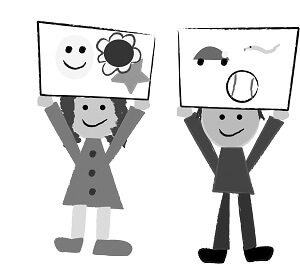
Ever heard of a hero shot?
A hero shot is the image of the item you’re marketing (or something related to it) that is the leading visual representation of your advertising element, webpage or campaign.
It’s those shiny products or happy people that occupy a large area on your home page, inside a banner graphic.
Most websites use them – and many abuse them.
The thing is, maybe it’s time to rethink the need for banner graphics.
You really only need it if it effectively communicates the value proposition of your business, or the product you’re selling. And to attract attention to your primary call to action.
But if in doubt – split test.
Test graphics against each other to see which performs better.
Then test to see if you get better results without the graphic.
Generally, you need to keep these in mind when it comes to your hero shots:
1. Test your images
Did I already mention this?
But I don’t mean just quantitative A/B testing.
You need to test images with eye tracking to see where attention is landing.
You may also want to use sites like FiveSecondTest to measure the recall for your tagline messaging after your graphic is viewed for 5 seconds.
2. Don’t crowd your banner
Don’t put too many images in your banner. Two heads aren’t necessarily better than one.

If you put two products into one hero shot, you’ll have competing calls to action. People won’t know which message to pay attention to.
They won’t know which offer or message is the main one.
So if you can, stick to one graphic to make things clear.
3. Don’t forget the headlines
An image alone probably isn’t going to help generate interest in your product. You still need to write a persuasive headline.
Spell out the benefits of your product for people, and combine text with your hero shot to reinforce what you’re saying.
Ideally, you want to clearly communicate a strong, unique selling proposition that convinces the potential customer that your product is better than other similar products, or previous versions of your product.
4. Use the model’s gaze
Research has shown that when we see a person in a photo looking somewhere, we look where they look. Our eyes are somehow programmed instinctively to follow their gaze.

Alternatively, you can use the model’s image to “point” to the most important content that you really want people to see.

5. Bikini girl or hot guy?
Gender does actually effect advertising, but the question here is how does it impact your advertising?
Consider testing hero vs heroine.

Generally, images of women perform better than images of men (and apparently, women in bikinis do especially well).
But it does depend on your product and target audience.
If you use a photo of an attractive woman when selling products like life insurance and annuities, it can actually have a negative effect. But if your ad is about payday loans and casino ads, then you benefit more by using a sexy heroine.
One study also showed that it’s worth testing expressions, as well as genders. Friendly faces and culturally appropriate colors can also impact conversion rates.

One thing to keep in mind: choosing a hero shot using your gut feeling is something like shooting yourself in the foot.
Make sure every part of your banner works together, and test to make sure it performs well.




